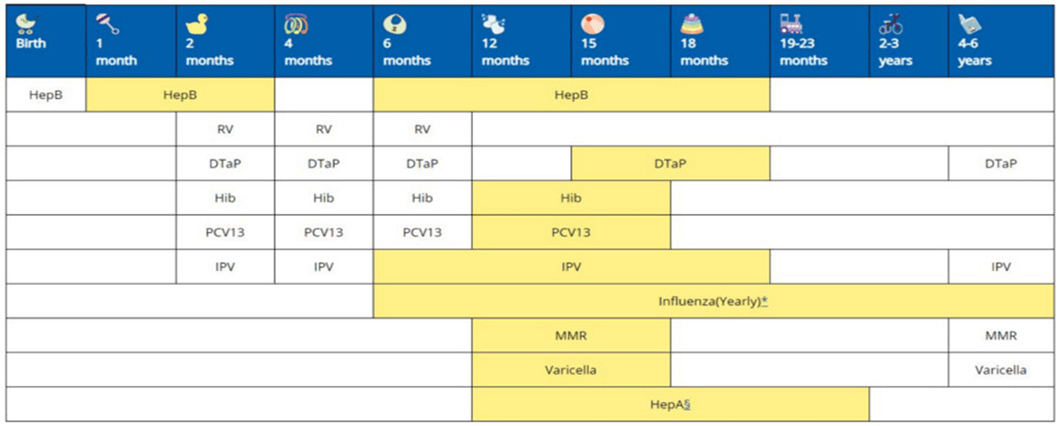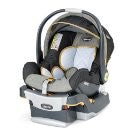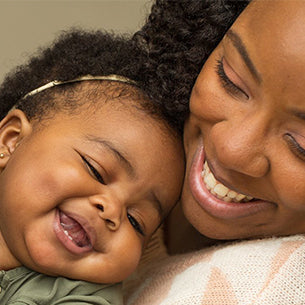Blog
Weaning Your Baby
Weaning your baby involves the process of going from breast milk and formula milk to introducing solid food. Babies are ready around 4 to 6 months for this kind of weaning.
Depending on age, weaning also means switching from breast milk to formula feeding for babies younger than 12 months.
For babies older than 12 months, weaning involves switching from breast milk or formula milk to cow milk and regular food.
The World Health Organization (WHO) recommends exclusive breastfeeding for up to 6 months, with continued breastfeeding along with appropriate complementary foods up to 2 years.
We recommend breastfeeding for 1 year and then slowly and gradually introduce the weaning process from breast milk to cow milk and regular foods.
The longer the baby is breastfed, the difficult it becomes to wean off.
A baby starts showing specific signs when he is ready to be weaned.
- The baby shows interest in solid foods while you are eating.
- The baby opens her mouth while you are eating.
- The baby can sit without support.
- The baby wants to drink formula milk or breastfeed more often.
- The baby weight has been doubled.
- The baby mouths her toys and hands.
Weaning off breast milk or formula depends more on development than age.
If the weight, height, bone development, and other physical development milestones are in line with the month of your child, of course with pediatrician recommendation, it’s the ideal age to wean the baby.
At age 2, your little one does not need to be breastfed anymore. Real food is more sustaining and nutritious.
Are you looking for straight forward baby care guidance? Are there questions you would like answered but do not know how to ask? Send us a message, we want to hear from you as we bring these articles your way.Why Breastfeed?
Breastfeeding has both mental and physical health benefits for both mother and child.
Breastfeeding Benefits for Baby
- Breast milk is the perfect baby food recommended exclusively for the first 6 months.
- Breast milk provides antibody protection for babies.
- Breastfeeding lowers your baby’s risk of allergies and infections.
- Breastfeeding makes babies smarter with high IQ in later childhood according to studies.
- Breastfeeding is linked to healthier weight gain rather than formula-fed babies with child obesity issues.
Breastfeeding Benefits for Mom
- Breastfeeding helps you lose pregnancy weight fast by burning calories.
- Breastfeeding helps in Uterus contraction.
- Breastfeeding mothers are less likely to go through postpartum depression.
- Breastfeeding lowers your risk of breast and ovarian cancer.
- Breastfeeding delays menstruation. It’s nature’s way of birth control.
Breastfeeding Perks
- Breastfeeding costs no money. It’s absolutely free and pocket-friendly.
- Breastfeeding saves extra milk preparation time day or night like with formula feeding.
- Going out with a breastfed baby is as easy as picking up the diaper bag and baby, and you are good to go.
- Breastfeeding lets you catch up sleep at night-time especially in the early days of motherhood.
- The skin-to-skin contact is a major benefit of breastfeeding to feel the bond between mother and baby.
Pumping
For some reason, if you are unable to breastfeed your baby directly, it is advisable to remove milk at her feeding times to get the milk flowing.
Before you begin pumping, the first and foremost step is to wash your hands with soap and water. In case of unavailability, an alcohol-based sanitizer will do the job.
Make sure your tools (pump and pump parts) are clean before you start pumping.
Consider important tips for pumping to get the milk flowing.
- Apply a warm and moist compress to your breasts
- Gently massage your breasts and rub your nipples
- Stay positive about the milk flow
- Be in a relaxing environment
There are different ways to pump the breastfeed depending upon affordability and convenience.
- Hand Expression
- Manual Pump
- Electric Pump
Electric Breast Pump is the preferred pumping method, especially for working women.
All You Need To Know About Breastfeeding
Breast milk is the best nourishment there is for babies. It is easily digestible and readily available. Some women are unable to breastfeed while others choose not to. Breastfeeding is a journey for both mother and baby. Even if second time moms who choose to breastfeed the second baby find it a whole new experience.
If you are the first-time mommy and choose to breastfeed for all the good reasons it has, you might need some motivation to explore yourself. Here is pretty much everything you need to know to get started with breastfeeding.
Breastfeeding Holds
You can also use pillows for additional comfort and support however suitable. The following positions prove comfortable to mothers while supporting the baby for breastfeeding.
Keep trying different positions to find out which one works well for you and your baby altogether.
Football Hold
This is recommended if you have had a C-section, flat or inverted nipples, large breasts, or strong let-down reflux.
Hold the baby position so she is perpendicular to your body with baby lying on her back with her head at the level of your nipple.
Support the baby’s head by placing the fingers of your hand at the base of her head, her back with your forearms, her legs should be placed between your elbow and your body, and your arms should be comfortably resting.
Cross-Cradle Hold
This is good for premature babies or babies having trouble latching on.
Hold the baby with your right arm, put her to your left breast, and support your breast with your left hand. Support the baby’s head by placing the palm of your hand at the base of her head.
This position makes it easy to guide the mouth of your baby to your breast while controlling her head.
Cradle Hold
It is a common position that is comfortable for both babies and mothers.
Hold the baby with her body facing yours. Put your baby to the right breast with your left hand supporting your breast and fingers underneath the breast away from the areola. Baby should be raised to the level of the breasts. Support the baby’s head on your forearm.
Laid-back Hold
This is a casual, baby-led approach. Lie back on a breastfeeding support pillow (you can use your pillow). Place your baby flush against your body. Put your baby’s head between your breasts. Support the baby’s head as your baby searches for the latch.
Side-Lying Position
It is recommended if you have had a C-section. It also allows you to rest while the baby is breastfeeding. Position your baby so that you both are facing each other while lying down. You both should be parallel to one another. Support the baby’s head by placing the arm at the base of her head or on the bed.Baby’s First Year: Grab the Camera to Record All Those Precious Milestones
Now that you are settling in with your new bundle of joy, there’s so much to look forward to besides all those diaper changes. In fact, just when that exhaustion really starts to kick in, you’ll be rewarded with some of their firsts as they hit those crucial developmental milestones.
These behaviors and physical skills will have you grabbing your camera to record those moments. Years down the road, they will still make you cry tears of pure joy as you reminisce about the first year.
Here’s a quick rundown of what you can expect, month by month!
1st Month
As you grow weary of the tiny human’s pooping, eating, and sleeping schedule, you’ll soon discover:
- Reflexes like flinching or blinking
- Looking toward familiar sounds
- Hands and fists moving toward the mouth
2nd Month
More like a baby, by the end of month 2, you get some more excitement:
- Adorable cooing sounds
- More eye coordination
- Better ability to hold head up
3rd Month
This month tends to get easier and more fun with these new developments:
- Smiling, especially at you
- More vowel sounds
- Recognition of familiar faces and things
- Imitating the faces you make
4th Month
Here’s where coordination really begins:
- Interaction with rattles and baby toys
- Rolling onto back
- Better tracking on movements
5th Month
Beware! Baby is starting to prep for bigger movements:
- Rolling back and forth from tummy to back and back to tummy
- Grabbing feet and attempting to taste them
- Moving things from hand to hand
6th Month
This is a big one! Are you ready for:
- Sitting up on their own
- Making consonant sounds
- Expressing forms of emotions
- Trying to grab anything within their reach
- Understanding and responding to their name
7th Month
All the other skills continue to improve, but now you’ve got:
- Definite response when being told “no”
- Raking grasp
- Responding to your expressions
- Combining more sounds together during babbling
8th Month
Where did the time go?!? Little one is now:
- Preparing to crawl
- Pulling into a standing position
- Drooling and perhaps sprouting teeth
9th Month
Rest as much as you can because by the end of this month:
- Crawling (and likely faster than you’d expect)
- Engaging in peekaboo
- Using the pincer grasp
- Pointing to signal what they want
10th Month
And curiouser and curiouser they become:
- Crawling and standing turns to cruising
- Banging things together to make noise
- Poking at things
- Feeding themselves with soft bite-sized foods
- Shaking head “no” and waving “bye”
11th Month
You’re almost at the end of the first year, and now you’ll see:
- Saying “mama,” “dada” or even “uh oh”
- Understanding your simple commands
- Mimicking your behaviors
12th Month
And now, officially a toddler, you can expect:
- Baby may start walking now (though if not, it is COMPLETELY normal!)
- Challenging items by throwing, dropping, or banging them
- Saying very simple words like “hi” or “no”
- Using a spoon, even if a little on the clumsy side
Finding the Right Childcare for your Little One
As you prepare for your little one’s arrival or welcome your bundle of joy, it is important to consider how you will care for your child. Do you get maternity leave? Will you have to go back to work immediately? How much maternity leave do you have? Where will you keep your baby while you work? Family, friends or childcare?
Things to consider while looking for childcare:
Get a childcare list to help you screen out locations and availability.
Proximity to home or work. You have to look at how easy it is to get to Point B from Point A.
Appearance. Do you feel comfortable taking your child there just by looking at the appearance? Is it inviting, comfortable, cold or dirty? Do they have enough staff? You do not want two teachers taking 12 toddlers to the park with no way to properly manage the journey. Are the kids happy, smiling? How about the staff? Schedule an appointment or swing by unannounced, whichever works. It does not hurt to find out if they do safety and fire drills. Make sure you get a feel of the place before enrolling your child.
Certifications and Inspections. Speaking from experience, I have come to realize that although we complain as parents when the day care is closed due to professional developments, daycares and centers that do this are much better equipped to caring for our kids and have less incidents compared to those that do not.
Remember you are giving away your gem to strangers. You must trust in their ability to watch your child and keep you worry free. Any doubts mean you have to look elsewhere, even if your child is already enrolled. Don’t forget, their safety and your peace of mind are what’s most important.
Good Luck!Doctor Visits/Check Up
The first few days, months, and years of your child will be filled with well child visits to the doctor. What this means is just like you went for ante-natal checkups to ensure your baby was developing properly and growing stress-free in your womb, now the doctor’s will be checking to see she is growing well, and take corrective measures if necessary. On a bright note: the doctor visits will gradually reduce as your baby gets older.
The doctor’s will be checking for developmental delays, autism, down syndrome, anemia, and so on.
Check-up Routine should be similar to this timeline:
- Baby at 2 weeks, 1 month.
- 3 month, 6 months, 9 months, 12 months, 15 months, 18 months, and 24 months
- 2 years 6 months, 3 years
- After age 3, visits become once a year.
I would like to mention that should your child be ill, please schedule a doctor’s visit, even if he/she is not up for a well visit yet. And if it is an emergency, call 911/find the closest urgent care clinic to you.

Baby Bath Care Tips
Are you wondering how to go about bathing your little one but have no idea what to do? I had my second child and still got nervous bathing her in the first few days. I spent lot of time scouring the internet and watching videos. So here are a few simple tips to help you at this time.
- Most important - Do not leave baby in a bathtub unattended. Make sure you have everything you need before you put your baby in the bathtub. I recommend the Aquatopia thermometer to check baby's temperature. Most especially if this is your first baby. You can leave the thermometer in till the bath is done.
- Wash and rinse hair gently, carefully keep water away from face. You could get one of those baby shower caps that divert water away from your little one’s face/eyes as your baby grows older.
- Wet and squeeze a washcloth, and wipe baby's face gently. Remember to gently wash behind the ears and around the neck.
- Carefully wash the rest of the body. Don’t forget to gently wash armpits, inside elbows, and behind the knees too as the baby’s form has not straightened out yet and easily traps sweat/fabric lint.
- When you get to baby's privates, lift his sacs or separate her folds (labia) if it looks swollen and use the washcloths to wipe the surrounding areas. Do not be alarmed if your baby girl has a discharge. Your baby was exposed to your hormones while in your womb. This usually clears up on its own within a few days. Remember, you wipe her from front to back,
- The same goes for the toes. Use the washcloth to wipe between the toes. This is another spot that easily traps thread fiber/lint.
- Be sure to have a towel around you during the bath and wrap baby immediately after bath. They get cold quickly and start shivering (Remember, they have had your warmth for nine months).
To Immunize or Not
There is usually a debate on whether or not to immunize children. Personally, I think it should be a simple decision but we all have our reasons.
When I had my first child, I knew I was going to be immunized. We all got immunized as kids, but we each missed one and got sick. I remember how it felt when we each had chicken pox as a result of an outbreak in school (of course we laugh off our itchy experience now).
So, I knew my children would be immunized. What I didn't know was how soon. We have so much information from so many different sources that fact and opinion gets mixed up in between. I ended up deciding not to immunize my son at the hospital when he was born and regretted it immediately we got discharged. ‘Will he be okay before his doctor's visit. What if he gets sick now?’. I was so happy the worries got off my chest when he was immunized at his 2- week visit. Since then, I have always ensured he does not get behind on his immunizations. He gets the occasional stomach bug or cold but there has not been anything major.
Reasons why we should think about immunizing our kids include:
- Knowing they are safe if there is an outbreak. This peace of mind saves you a lot of stress.
- Knowing their immune system is bolstered up, less absences from school due to an illness.
- Knowing they will be polio free and the list goes on.
Even if we live in a relatively healthy community, we all love our little ones and their safety is important. Our goal is to protect them. However, what if we visit a community that has these diseases or illnesses we or our children are not vaccinated against? Need more info on vaccination? Please visit https://www.cdc.gov/features/reasonstovaccinate/
Our Trusted & Preferred Baby Site(s) List
You have probably found out that you are having a baby or probably your baby is finally here and as a parent, you want to make sure you are doing everything right. We parents are usually greedy for everything we can read up about our munchkins. So, here we are providing you with our trusted go to sites for everything about your baby and you.
These sites have apps you could download, and also come with tools to check your baby due date based on last period, contraction timer, ovulation calculator and also fertility advice.
-
Babycenter.com
This site gives week by week tidbits on your unborn baby. It describes the size and gives what new thing your baby is doing in your womb. BabyCenter also gives week by week/month by month information on caring for your baby after delivery. It covers topics like allergies, your toddler, grown up kids, you as the parent and lots more. BabyCenter also owns Pregnancy.com
-
Babycentre.co.uk
This is the British/European version of babycenter.com-- while they cover the same topics, they do not have exactly the same information. We have to remember that the site covers a different demographic region; therefore, the community forums and even the contributors would have slightly different but equally useful information.
-
Whattoexpect.com
While all the sites on our lists have apps. Whattoexpect.com is the only one to my knowledge (please correct me if I’m wrong) that has a book –What to Expect When you are Expecting by Heidi Murkoff and Sharon Mazel. They also put together a movie also goes by the same name as the book featuring Cameron Diaz, Jennifer Lopez, among others. It gives expecting couples/parents an insight on what to expect like its name says, anything could happen.
-
Parents.com
At Parents.com, everyone is included. The site covers everything from pregnancy, to baby, to raising your children, and the list goes on. They seem to be a family guide. They also own the American Baby magazine.
-
Thebump.com
The bump focuses primarily on people trying to conceive, pregnant women and first-time parents (I think every parent should find it useful though). It gives fertility advice to those trying to conceive and other useful information.
-
WebMD Baby
As the name implies, this is a medical site with a section dedicated to the wellness of mother and baby. WebMD Baby gives medical advice, baby care tips, and so on regarding the safety of your lil’ one.
Labor Checklist
Labor could happen anytime. No-one knows for certain the exact moment they will go into labor. Do try to keep your partner involved. I would recommend that you prepare a travel bag for labor emergency around the 6th month. Anything you feel important could be put in the bag pending when you go into labor.
For Baby
Important
- Car seat*
- Car seat cover (winter baby)
- Take home clothes* from baby—Cap, socks, onesies (take note of season)
- Receiving blanket*
- Wipes

For You
Important
- Picture ID, insurance information, and any other hospital documentation?*
- Breast Pump (if you are breastfeeding, chances are you might get engorged)
- Tooth brush & tooth paste
- Nursing Supplies (Bra <right size>, Breast pads, and nipple cream
- Boppy Pillow*
- Underwear, night clothes, & robe*
- Toiletries (Make-up, lotion, deodorants, hair products, body wash, & sanitary pads)
- Cellphone & Charger*
- Witch Hazel (helps with postpartum soreness) & Sanitary towels (heavy flow)*
- Eye glasses (if you use them)

Other:
- Camera
- Cash
- Flip flops
- Journal (record special things about your baby like feedings and questions you might have)
Please see http://ourhandcraftedlife.com/wp-content/uploads/2014/10/Hospital-Checklist-Pinterest.jpg for a ready-made printable checklist.











